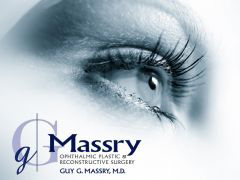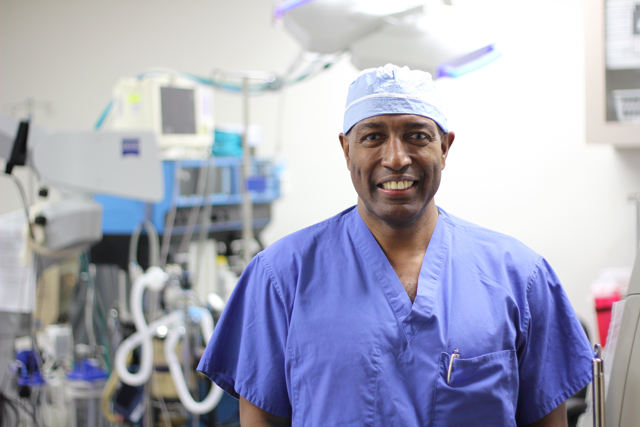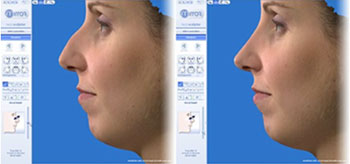 Dr. Guy Massry, Beverly Hills Ophthalmic Plastic Surgery, has just published results on an innovative surgical technique for minimally invasive brow lifting.
Dr. Guy Massry, Beverly Hills Ophthalmic Plastic Surgery, has just published results on an innovative surgical technique for minimally invasive brow lifting.
Dr. Guy Massry, Beverly Hills Ophthalmic Plastic Surgery, has just published results on a new and innovative surgical technique for minimally invasive brow lifting. Dr. Massry has named the procedure “The External Browpexy.”
The procedure is easy to learn, as it employs standard surgical techniques, with most cosmetic surgeons adapting to the technique quickly after a short period of observation.
Dr. Massry’s goal was to develop a brow lifting procedure which was quick, relatively complication free, can be performed under local anesthesia, and yield excellent results with high patient satisfaction. The “External Browpexy” has done just this.
Dr. Massry first introduced the procedure (with all data and surgical outcomes) at last year’s fall meeting of the American Society of Ophthalmic Plastic and Reconstructive SurgeryMassry(ASOPRS) in Orlando, Florida. The presentation was well received and adopted by many in the field. Dr. Massry later presented the technique at the Cedars Sinai Annual Multidisciplinary Cosmetic Surgery Scientific Symposium in Los Angeles, California.
Dr. Massry then submitted the technique for peer reviewed publication. It was accepted for publication at the end of 2011 and has come to press this month, being published in the journal Ophthalmic Plastic and Reconstructive Surgery (OPRS), the only scientific peer reviewed journal for ophthalmic plastic surgery. Dr. Massry is proud to present the technique to the general medical and surgical community.
This recent innovation is born out of a continuing effort by DrMassry to improve the field of Ophthalmic Plastic &Reconstructive Surgery. Dr. Massry is also active making comprehensive information available to anyone consideringophthalmic plastic surgery (such as brow lift surgery, blepharoplasty surgery, eyelid fat grafting, eyelid fillers and reconstructive eyelid surgery) through his website and social network pages. Please visit www.drmassry.com. Comprehensive information on these subjects are also available in Dr. Massry’s most recent textbook in the field titled “Master Techniques inBlepharoplasty and Periorbital Rejuvenation”
http://www.springer.com/medicine/ophthalmology/book/978-1-4614-0066-0.
Cosmetic eyelid plastic surgery is a practice which requires a specialist to get the best results. Beverly Hills cosmetic eyelid surgeon, Dr. Guy Massry, has years of experience with eyelid surgery (blepharoplasty, canthoplasty, ptosis repair, eyelid fat grafting, eyelid fat repositioning, etc.) and would be happy to evaluate your specific needs for enhancing your appearance. He practices reconstructive and cosmetic eyelid surgery, reconstructive ophthalmic plastic surgery, cosmetic wrinkle treatment, and more in Los Angeles, West Hills, and Beverly Hills, California.
 A common question from patients is when do you see an urologist or a nephrologist for kidney problems? This can be somewhat confusing as both doctors treat conditions of the kidneys.
A common question from patients is when do you see an urologist or a nephrologist for kidney problems? This can be somewhat confusing as both doctors treat conditions of the kidneys. A recent study published what many urologists already know – PSA tests for prostate cancer save lives. The study published in the New England Journal of Medicine showed that while the incidence of prostate cancer has not decreased in the past 20 years, the death rate from the disease has decreased a staggering 40%.
A recent study published what many urologists already know – PSA tests for prostate cancer save lives. The study published in the New England Journal of Medicine showed that while the incidence of prostate cancer has not decreased in the past 20 years, the death rate from the disease has decreased a staggering 40%. Dr. Guy Massry, Beverly Hills Ophthalmic Plastic Surgery, has just published results on an innovative surgical technique for minimally invasive brow lifting.
Dr. Guy Massry, Beverly Hills Ophthalmic Plastic Surgery, has just published results on an innovative surgical technique for minimally invasive brow lifting. It is well known that the high sugar content in soda can cause cavities in your teeth and expand your waistlines, but did you know that consuming soft drinks might also increase your risk for asthma and/or chronic obstructive pulmonary disease (COPD)?
It is well known that the high sugar content in soda can cause cavities in your teeth and expand your waistlines, but did you know that consuming soft drinks might also increase your risk for asthma and/or chronic obstructive pulmonary disease (COPD)? Despite a double hip replacement surgery six years ago, La Peer Health Systems anesthesiologist, Dr. Calvin Johnson, is just as mobile as he was in his prime.
Despite a double hip replacement surgery six years ago, La Peer Health Systems anesthesiologist, Dr. Calvin Johnson, is just as mobile as he was in his prime. There are various different types of anesthesia that can be used, but do you know exactly what each option means for you?
There are various different types of anesthesia that can be used, but do you know exactly what each option means for you? Most of us have our cell phones within arms length at all hours of the day. And at one time, we have all heard that the radiation from cell phones could cause tumors, but we continue to use our phones non-stop anyway. So what does the research actually say about this?
Most of us have our cell phones within arms length at all hours of the day. And at one time, we have all heard that the radiation from cell phones could cause tumors, but we continue to use our phones non-stop anyway. So what does the research actually say about this? Most women know to get a pap smear once a year. Some people know they are supposed to get a mole check yearly, but did you know there also several other cancer screenings you should have done?
Most women know to get a pap smear once a year. Some people know they are supposed to get a mole check yearly, but did you know there also several other cancer screenings you should have done? Deciding whether or not to circumcise an infant can be a difficult decision for new parents.
Deciding whether or not to circumcise an infant can be a difficult decision for new parents. Scientifically, humans should be able to live to the age of 120 years. But how many people do you know that lived to see 120 or, for that matter, even 90 years old? Studies have found that Humans are not living as long as we possibly could because of poor diet and over-exposure to excessive toxins, carcinogens and stress.
Scientifically, humans should be able to live to the age of 120 years. But how many people do you know that lived to see 120 or, for that matter, even 90 years old? Studies have found that Humans are not living as long as we possibly could because of poor diet and over-exposure to excessive toxins, carcinogens and stress. Wondering what you will look like after reconstructive surgery? With the help of advanced 3D imaging technology you can see the potential outcome during your consultation with your surgeon.
Wondering what you will look like after reconstructive surgery? With the help of advanced 3D imaging technology you can see the potential outcome during your consultation with your surgeon.